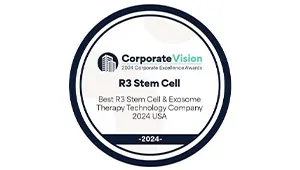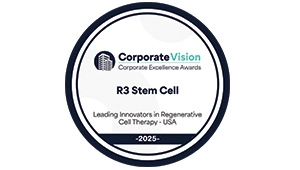Human amniotic cells have been used over the past 50 years as a diagnostic tool for prenatal diagnosis of genetic abnormalities in the fetus. Over the past 5 years, however, the potential for using stem cells derived from amniotic fluid has become a reality, especially for treating chronic diseases and conditions.
Amniotic derived stem cells can be harvested from the amniotic sac of a pregnant female. This occurs during child birth or during a procedure called amniocentesis. Since amniocentesis has slight risks, the most common scenario is that amniotic fluid is obtained during a caesarean section from a consenting donor.
Otherwise it would be discarded, and thankfully amniotic fluid contains a very high concentration of stem cells.
These cells are prized for their ability to form a variety of differentiated cell lines such as blood, bone, muscle, liver, skin, and more. This is unlike the other types of stem cells (other than embryonic), which are only able to differentiate into certain types of tissues.
The Focus
The focus for using stem cells derived from amniotic fluid comes from the ethical battle fought over using embryonic stem cells. Many activists do not like the idea of using stem cells derived from fetuses. Instead, using stem cells derived from amniotic fluid solves this ethical issue. The mother can bank her amniotic fluid or the umbilical cord (which is also rich with stem cells) for later use.
The amniotic fluid found in the womb promotes the develop of the fetus. It is inhaled and exhaled by the fetus in the womb and directly responsible for the development of the lungs. The amniotic fluid promotes the development of the limbs, and passes through the body of the developing fetus re-entering the womb as urine.
How are Stem Cells Derived from Amniotic Fluid used in Research?
The amniotic cells used in research are primarily donated by mothers in their first trimester of pregnancy. Amniotic derived stem cells were found to have similar properties to embryonic stem cells after tests were performed.
Researchers found that the cells were grown and reprogrammed into a more primitive state when valproic acid was added to the culture medium. Tests run on these cells showed that amniotic derived stem cells have the capability to develop into any type of cell found in the body with a property called pluripotency.
The potential of using amniotic fluid to cure all kinds of diseases, disorders, and injuries is now a reality. Amniotic stem cells not only offer a rich cell line to assist in research but also seem to offer a customized cell supply for newborns and sometimes their siblings. These cells are the medium between embryonic stem cells and adult stem cell lines, such as bone marrow derived stem cells.
Research and the Future of Stem Cells
In the research arena, stem cells are grown in a culture, and there is potential for reengineering and regenerating cells and tissues. Some research has shown that amniotic derived stem cells differentiate using a scaffold or three-dimensional matrix for support.
These cells have been documented to have the ability to differentiate into all types of cells and tissues with a high renewal capacity and no loss of cellular integrity.
The positives outweigh any thought of a negative aspect to using amniotic derived stem cells for treatment and therapy. It is believed that about 38 percent of the population could be treated as a match from stem cells harvested from about 150 donors. This is amazing statistics when you consider the closest approved therapy right now is bone marrow implantation, as well as the odds of finding a donor and the risk of rejection.
R3 Stem Cell offers amniotic stem cell therapy for numerous musculoskeletal conditions including plantar fasciitis, degenerative arthritis, rotator cuff and achilles tendonitis, ligament injury and more. Amniotic derived stem cell therapy offers nonoperative pain relief with the potential to regenerate damaged tissue!












No Comments